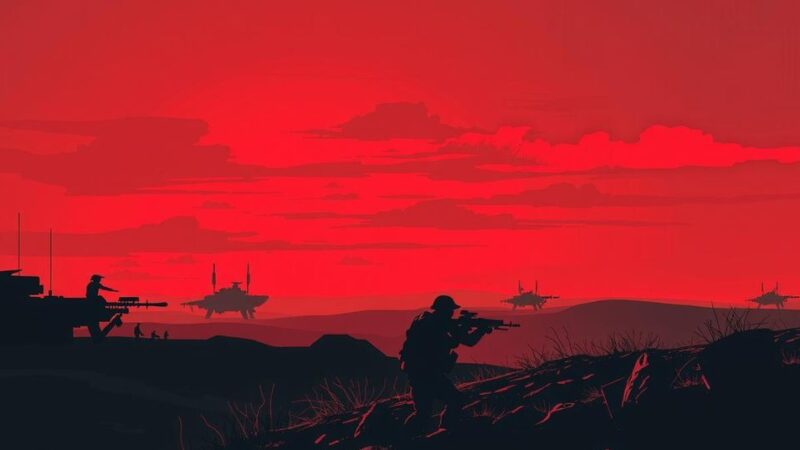Calm prevails in Damascus as the new interim president initiates efforts for national unity. Concurrently, intense battles ravage northeastern Syria, pitting Kurdish forces against a Turkish-backed militia. These conflicts threaten the interim government’s authority and the fragile peace within the region, impacting the Kurdish population and raising concerns for neighboring countries.
Despite a calm atmosphere enveloping Damascus, significant battles continue to flare in northeastern Syria, challenging the newly established interim president, Ahmed al-Shara. In the capital, al-Shara convened a national unity conference and received international dignitaries, as citizens freely express their opinions for the first time in years. Meanwhile, in the northeast—beyond the control of the Damascus government—conflicts have persisted, with drone activity and airstrikes displacing thousands.
The ongoing conflict features two rival militias: the Kurdish-led Syrian Democratic Forces, with the backing of the United States, and a primarily Syrian Arab militia supported by Turkey. This violence has escalated since the ousting of former President Bashar al-Assad in December. The outcome of this struggle carries significant implications for al-Shara’s attempts to unify Syria and manage its various ethnic factions, as well as to contain a resurgent Islamic State.
The situation is particularly critical for Syria’s Kurdish population, which constitutes approximately 10 percent of the national demographic. Over time, the Kurds have developed a semi-autonomous region in the northeast, raising concerns for Turkey, which perceives Kurdish factions as a domestic and regional threat due to their aspirations for independence.
The contrasting conditions in Damascus and northeastern Syria illustrate the complexities facing Syria’s new interim president and the precarious balance of power in the region. With various armed groups vying for control, the future unification efforts of al-Shara are crucial not only for internal stability but also for mitigating potential cross-border tensions with neighboring nations.
Original Source: www.nytimes.com






